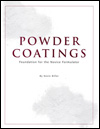Building Façades with an Eye for Color and the Environment
Modern façade paints must be weather resistant, diffusible and feature long-lasting fastness.

What do colors mean to us? Colors fulfill several important functions. Colors are identifiers. They help us communicate, organize ourselves at work or at home, or move around in traffic. Colors also alert us. Signal colors attract our attention to things that are important. Finally, colors speak to our senses and emotions. Colors are decorative and they create different moods.
Colors set the tone – in building façades as much as in all other areas of life. A building that fits well into its surroundings already gives us clues about the interior. Color is one of the elements that contribute to a building’s pleasant atmosphere.
However, the good looks of a façade are far from being sufficient today. Modern façade paints must be weather resistant, diffusible and feature long-lasting fastness. They should also be easy to process and environmentally friendly.
Façade paints are usually water-based polymeric dispersions. In addition to colorants, they generally contain fillers and a number of additives, such as preservatives, defoamers or thickening agents. For pigments, mostly inorganic pigments such as iron oxides, cobalt oxides or titanium dioxide, are used. Organic pigments are also increasingly used to enhance the brilliance and purity of the shade. However, pigment manufacturers do not recommend the use of organic pigments, and extensive tests should be undertaken beforehand.
With its Colanyl® 500 series, Clariant, one of the world’s largest pigment producers, offers high-end pigment preparations for façade paints. The formulations are based both on organic and inorganic pigments and stand out because of their high color strength and brilliance.
Aside from that one exception, there are numerous possibilities to create façades for every taste. The Colanyl 500 series offers pigments across the entire color spectrum. To allow an easy and precise definition of color shades, preparations are available with very narrow specifications, meeting gravimetric color strength ±2% and volumetric color strength ±3%.
Their availability as liquid dispersions makes the systems easy to process. Good flowability and pumpability, high stability to sedimentation, good resistance to drying out, and high quality with very narrow specification tolerance make these aqueous preparations an excellent choice for the hassle-free use in automatic dosing and mixing equipment.

For several years, pigment preparations have been available that contain only very small amounts of VOCs. The Colanyl 500 series was one of the first of its type in the market. It is not only low in VOCs but it is also free of ethoxylated alkylphenols (APEO). Formulations in which these products are used fulfill the requirements of the European Decopaint Directive 2004/42/EG, which became effective in 2007 and 2010. The products also meet the much more stringent standards of the German “Blue Angel” eco label for low-emission wall paints, RAL-UZ 102, which limits the VOC content of a wall paint to 700 ppm.
Almost all products of the Colanyl 500 series already fulfill these requirements and can therefore serve as raw materials for wall paints in any concentration (as long as this works technically) without influencing the VOC limits in a negative way.
To simplify and unify eco-labeling, many countries, including the United States, formed the Global Ecolabelling Network (GEN) in 1994. GEN, which currently counts 28 eco-label organizations as its members, aims at improving the exchange of information about national eco-labeling activities, and fostering the development of eco-label programs in different countries.

What do colors mean to us? Colors fulfill several important functions. Colors are identifiers. They help us communicate, organize ourselves at work or at home, or move around in traffic. Colors also alert us. Signal colors attract our attention to things that are important. Finally, colors speak to our senses and emotions. Colors are decorative and they create different moods.
Colors set the tone – in building façades as much as in all other areas of life. A building that fits well into its surroundings already gives us clues about the interior. Color is one of the elements that contribute to a building’s pleasant atmosphere.
However, the good looks of a façade are far from being sufficient today. Modern façade paints must be weather resistant, diffusible and feature long-lasting fastness. They should also be easy to process and environmentally friendly.
Façades - Not an Easy Substrate
The requirements for colorants in façade paints differ significantly from the requirements for pigments used in other coating applications. What counts is not high resistance to chemicals or temperatures but other, albeit not less-demanding, properties. Façade paints are usually not painted over, and they are porous. There is less protection provided by the paint system, which results in requirements that are higher than in other areas, for example automotive coatings. Also, substrates such as concrete require that the pigments have a high alkalinity resistance.Façade paints are usually water-based polymeric dispersions. In addition to colorants, they generally contain fillers and a number of additives, such as preservatives, defoamers or thickening agents. For pigments, mostly inorganic pigments such as iron oxides, cobalt oxides or titanium dioxide, are used. Organic pigments are also increasingly used to enhance the brilliance and purity of the shade. However, pigment manufacturers do not recommend the use of organic pigments, and extensive tests should be undertaken beforehand.
With its Colanyl® 500 series, Clariant, one of the world’s largest pigment producers, offers high-end pigment preparations for façade paints. The formulations are based both on organic and inorganic pigments and stand out because of their high color strength and brilliance.
Coloristics, a World of Possibilities
Modern façade paints are available in numerous shades, from signal red and bright blue to soft pastel colors. The metal effect pigments were one type of pigment that could not be used in coatings for a long time. Pearl shimmer, mica or interference pigments require utmost transparency of the coating to create the desired effect. Another requirement is the consistent orientation of the platelet-shaped effect pigment particles parallel to the coating surface. Usually these requirements cannot be met in wall paints. Pigment particles also break when exposed to high shearing forces, such as occur in painting, so the visual effect might be destroyed. Even though pre-dispersed products are now entering the market, they are not very wide spread at the moment.Aside from that one exception, there are numerous possibilities to create façades for every taste. The Colanyl 500 series offers pigments across the entire color spectrum. To allow an easy and precise definition of color shades, preparations are available with very narrow specifications, meeting gravimetric color strength ±2% and volumetric color strength ±3%.
Their availability as liquid dispersions makes the systems easy to process. Good flowability and pumpability, high stability to sedimentation, good resistance to drying out, and high quality with very narrow specification tolerance make these aqueous preparations an excellent choice for the hassle-free use in automatic dosing and mixing equipment.

Environmentally Friendly - A Growing Demand
In addition to excellent quality and large color choice, the environmental aspect is becoming increasingly important. Architects, builders and homeowners pay more attention to the ingredients of façade paints today. Legislation is backing this trend, with the result that it is mandatory for an increasing number of dispersion coatings to be labeled according to their product category and to provide a detailed list of ingredients. The main source of concern is whether the VOC content of the ready-to-use product meets the requirements. Environmentally friendly products are easy and quick to identify by their eco-labels. The internationally recognized eco-labels are listed in Table 1. Products with low VOC content must fulfill the standards of the respective environmental labels, which are often more stringent than the legal requirements.For several years, pigment preparations have been available that contain only very small amounts of VOCs. The Colanyl 500 series was one of the first of its type in the market. It is not only low in VOCs but it is also free of ethoxylated alkylphenols (APEO). Formulations in which these products are used fulfill the requirements of the European Decopaint Directive 2004/42/EG, which became effective in 2007 and 2010. The products also meet the much more stringent standards of the German “Blue Angel” eco label for low-emission wall paints, RAL-UZ 102, which limits the VOC content of a wall paint to 700 ppm.
Almost all products of the Colanyl 500 series already fulfill these requirements and can therefore serve as raw materials for wall paints in any concentration (as long as this works technically) without influencing the VOC limits in a negative way.
Conclusion
Colanyl 500 is an innovative range of pigment preparations for water-based dispersion paints and synthetic resin-bound renderings. Its applications also include coloring aqueous wood stains and varnishes, acrylic and polyester cast resins, and latex coloration and waterproof inks. The product range not only features excellent properties but it also fulfills the most stringent ecological standards. Façade paints made with products from the series not only appeal to the senses and fit into their surroundings in terms of color, but also in terms of environmental friendliness.Environmental Labels Are Known and Recognized Worldwide
The goal of all eco-labels is to identify environmentally friendly products to consumers, and to promote sustainable industry production and consumption. The world’s first environmental label was the “Blue Angel”, which was introduced in Germany in 1977. The European flower eco-label was introduced as a common label of all EU member states. In the United States, the Green Seal, which is supported by EPA, is increasing in importance. Asian countries started to label environmentally friendly products in the early 1990s. China introduced the HUAN label, and in India and Japan, the Ecomark identifies environmentally friendly products. Table 1 lists all current eco-labels.To simplify and unify eco-labeling, many countries, including the United States, formed the Global Ecolabelling Network (GEN) in 1994. GEN, which currently counts 28 eco-label organizations as its members, aims at improving the exchange of information about national eco-labeling activities, and fostering the development of eco-label programs in different countries.
Looking for a reprint of this article?
From high-res PDFs to custom plaques, order your copy today!







